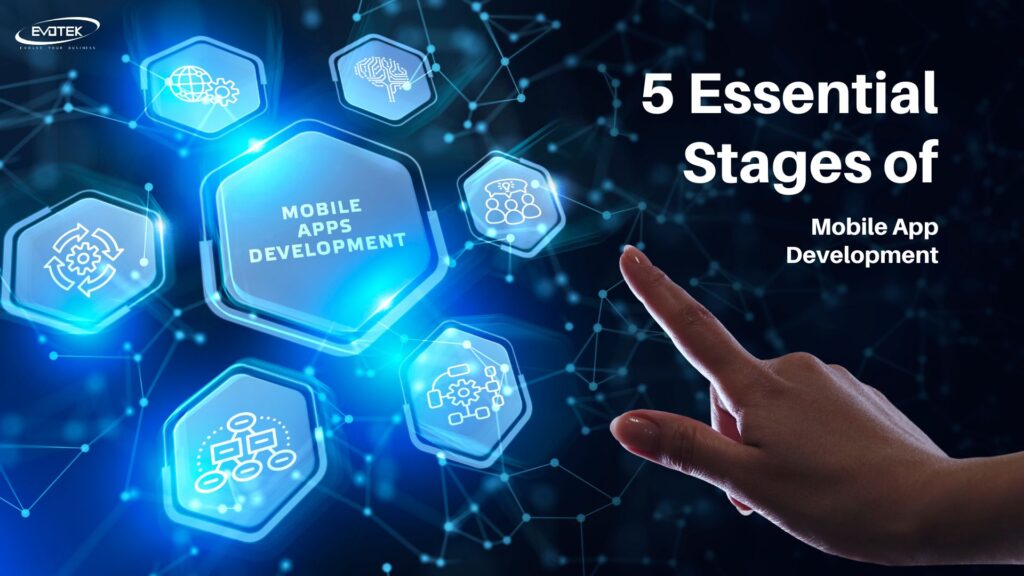In today’s digital landscape, mobile application development is integral to our daily lives. A Statista survey projects that mobile apps will generate over $613 billion in revenue by 2025, withmobile games contributing the largest share. The number of app downloads has also surged, reaching 257 billion between 2016 and 2023. This growing demand underscores the robust expansion of the mobile software industry.
However, creating a successful mobile application is a complex task that requires skill, experience, and meticulous planning. The development process involves five critical stages: planning, design, development, testing, and release.
In this article, Evotek will detail each of these five stages in the mobile application development lifecycle.
What is Mobile Application Development?
Mobile application development involves creating software specifically for mobile devices such as tablets, smartphones, and other handheld gadgets. This process encompasses writing source code, designing user interfaces, and leveraging the unique features of mobile devices.
While similar to other software development, mobile application development uniquely utilizes native device capabilities. Mobile apps can integrate with and use functions such as GPS, Bluetooth, cameras, microphones, and other built-in features.
In the global mobile application market, Apple’s iOS and Google’s Android platforms dominate the largest market share. Although apps can be developed for other platforms, most developers focus on these two major markets. V Various development frameworks are available, offering developers a wide range of tools and technologies.
Types of Mobile Applications
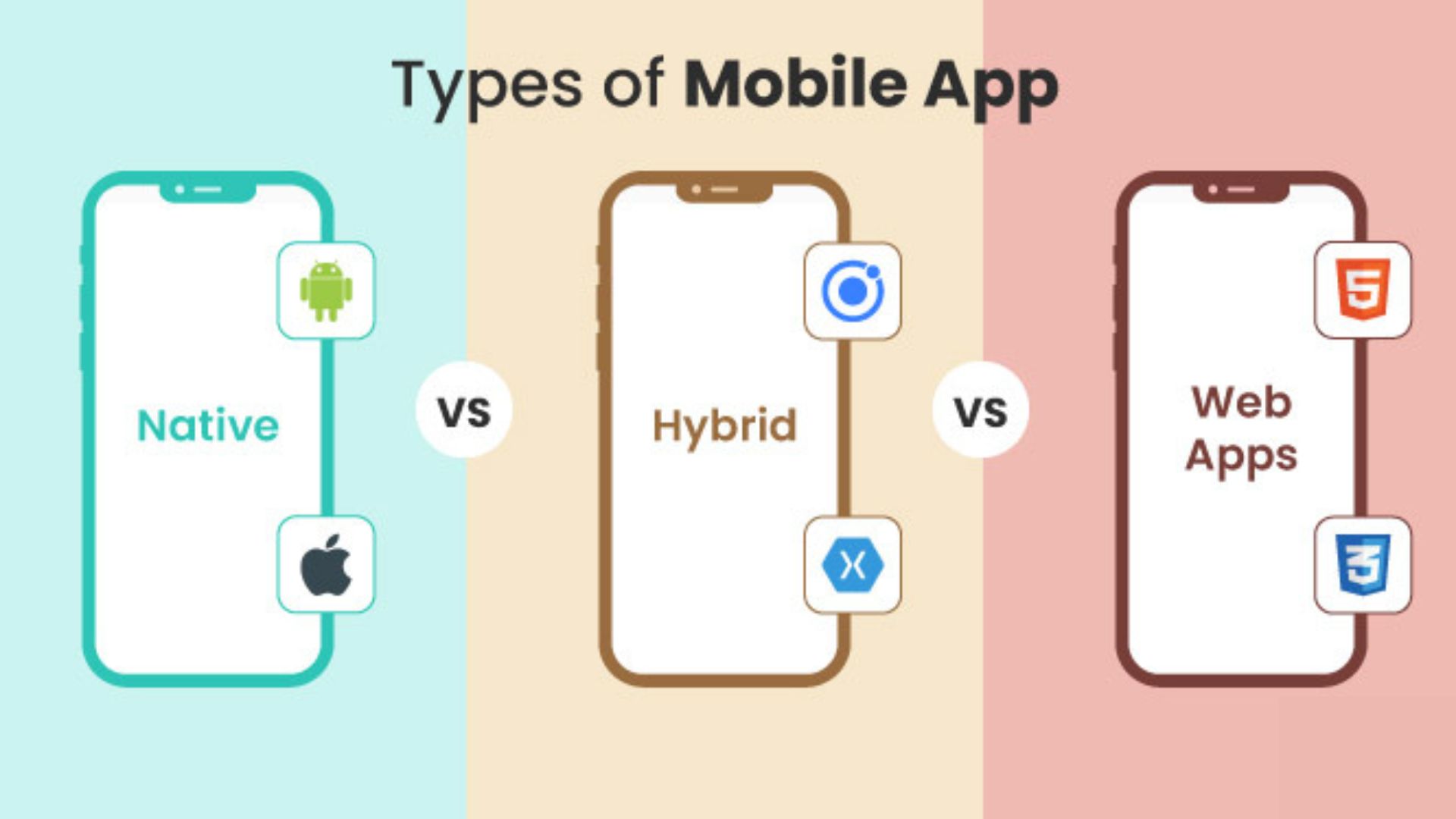
Native Apps
Native apps are developed specifically for a particular mobile operating system, such as Android or iOS. They are written in the platform’s official programming languages and use its development tools, allowing them to fully utilize the device’s features and hardware. Native apps deliver a smooth, high-performance user experience and meet stringent security and privacy standards. However, developing native apps for multiple platforms requires writing separate code for each one, which increases development costs and time.
Web Applications (Web Apps)
Web applications are applications that operate in a mobile web browser. They do not need to be installed, just access the corresponding URL. Web applications use web technologies such as HTML, CSS, and JavaScript to build interfaces and features. They automatically adapt the interface to fit the screen and size of different devices, providing an experience similar to a native app. The primary advantage of web applications is their ease of development, deployment, and updating across various platforms. However, they cannot fully leverage the device’s hardware features like native apps can.
Hybrid Apps
Hybrid apps combine the benefits of both native and web apps. They are developed using web technologies like HTML, CSS, and JavaScript, but are then encapsulated within a native application framework. This approach allows hybrid apps to access device features and hardware while being compatible across multiple platforms. Popular technologies for developing hybrid apps include Ionic, Cordova, React Native, and Flutter. Hybrid apps offer a user experience similar to native apps on various platforms, while reducing development costs and time.
Developing Mobile Applications with the Agile Model
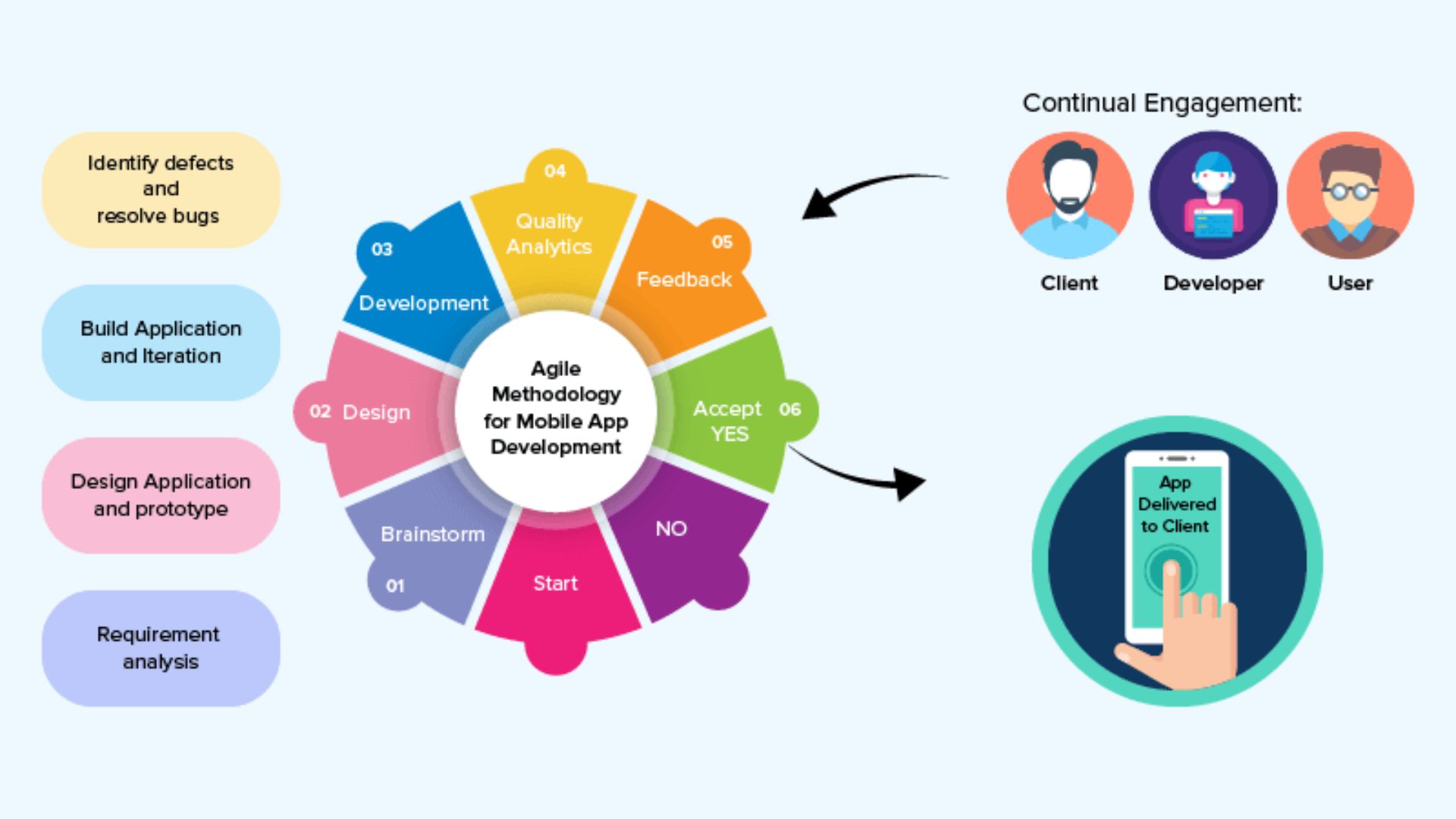
Mobile app development is an ongoing process that requires meticulous project management. Breaking down the development into manageable steps and closely monitoring each aspect ensures the highest quality. The Agile methodology, a widely adopted Software Development Life Cycle (SDLC) approach, has transformed software development practices.
Agile methodology in SDLC sequences the phases from project inception to completion. Each phase includes activities, ensuring specific results. Agile emphasizes agility and adaptability, which is important for projects with ever-evolving requirements. It works on iterative delivery and incremental development. Adopting Agile means adhering to the key principles of mobile app development:
- Prioritizing functional software over extensive documentation.
- Emphasizing customer collaboration over formal contracts.
- Adapting to changes rather than adhering to a fixed plan.
Key stakeholders in Agile include the Product Owner, Development Team, Project Manager, and Project Sponsor.
Stages of Mobile Application Development
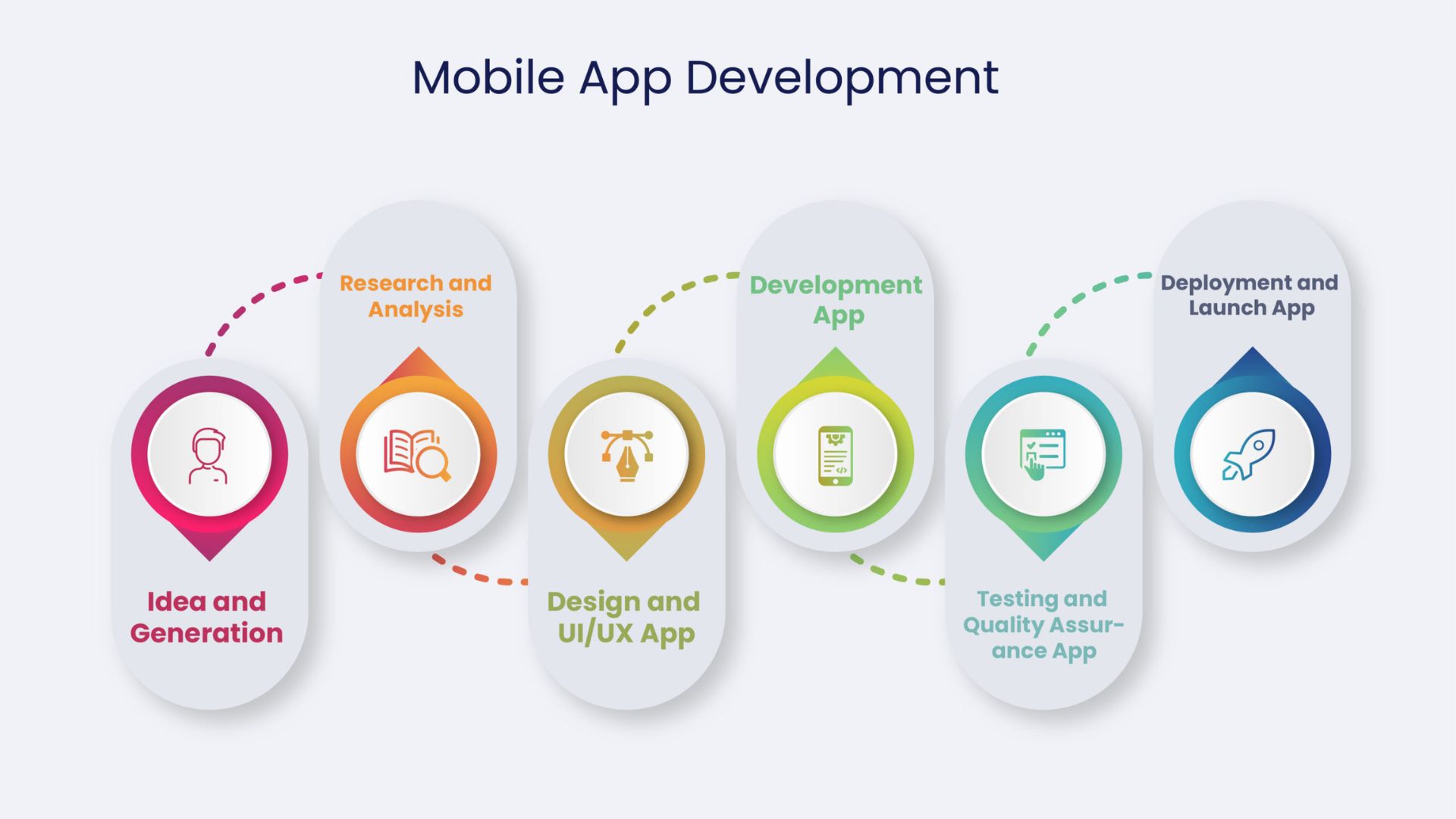
Phase 1: Planning
The planning phase is the initial and crucial stage in the application development lifecycle. This phase involves comprehensive planning, defining the application’s purpose, identifying the target audience, selecting the appropriate technology, and setting success metrics.
Define the Goal of the Mobile Application
A successful mobile application hinges on effectively addressing user needs. It’s essential to identify the specific problems the app will solve and outline how users will benefit from its features.
Survey the Target Audience
Understanding the target audience is key to developing a successful mobile application. Conduct thorough research into your potential users’ demographics, motivations, behaviors, and goals. Whether they use iOS or Android devices, capturing user characteristics throughout the app’s lifecycle is vital. This research helps build detailed user profiles, providing insights into their actual needs and constraints.
Analyze Competitors
Conduct a comprehensive analysis of your competitors’ apps. This audit helps identify any missing features in their offerings, which you can leverage to differentiate and enhance your own app.
Choose a Mobile Platform
After identifying your target audience, decide on the preferred mobile platform, iOS or Android. There are two main development approaches:
● Native Development
Choose native development if you want a high-performance app with complex features and a smooth user interface. Native apps are also easier to upgrade and extend with new features in the future.
● Cross-Platform Development
Opt for cross-platform development if you need to quickly test your app idea in the market or require compatibility with multiple operating systems. This approach allows you to create a single app for both iOS and Android platforms, making it more cost-effective.
Requirements of the Planning Phase
- Define Objectives and Audience: Understand what your app aims to achieve and identify the target audience through comprehensive analysis and research.
- Select the Mobile Platform: Choose between native or cross-platform development based on performance needs, user experience goals, and budget.
- Develop a Project Roadmap: Create a detailed project plan that outlines milestones, timelines, and resources. Incorporate technical requirements based on desired functionality to ensure smooth project execution.
Phase 2: Design
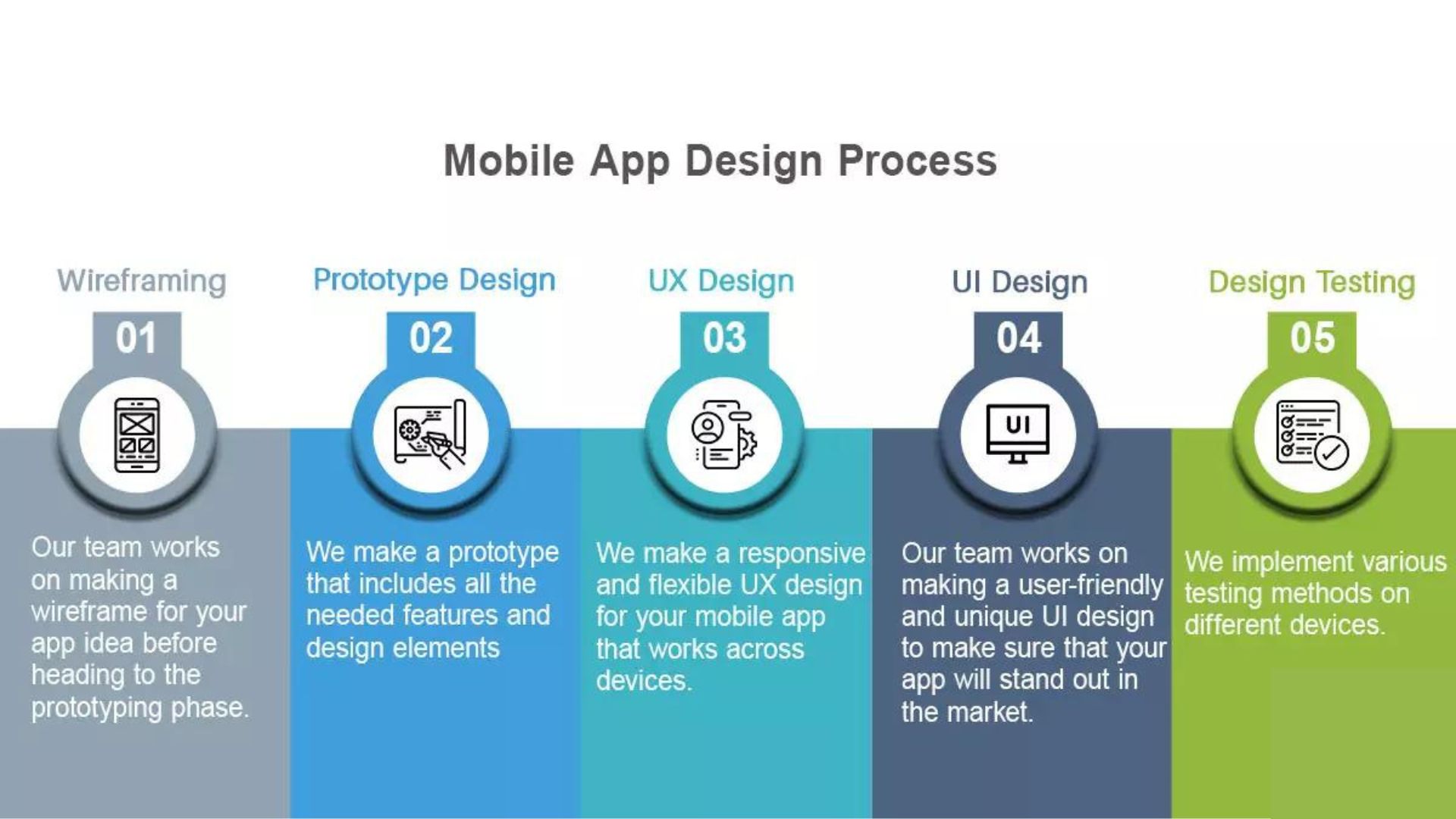
Clarify Requirements
The team starts by thoroughly reviewing the project’s initial data. They then conduct a workshop with the client to delve into specific and contextual questions. It’s crucial for all project participants to collaborate closely to fully understand the requirements.
UX Planning
During this phase, the team designs the application’s architecture to enhance conceptual understanding. They prepare a detailed prototype of the future mobile application, covering every element, from buttons to pop-ups and text fields.
The team meticulously analyzes and categorizes all customer information, addressing any gaps. They structure the project, outline user flows, identify optimal paths, and resolve edge cases. After signing an NDA with the client, the team proceeds to design the user interface.
User Interface Design
In this stage, the focus shifts to adapting the design to meet the preferences and needs of the target audience, considering customer input. Once the design of the main screen is approved, the team develops project guidelines and completes the design of the remaining screens.
Maintenance and Inspection
The designer’s role extends beyond creating prototypes. They continue to collaborate with the development team during the development phase, addressing complex structural and logical elements, and balancing aesthetic appeal with technical feasibility. Additionally, the designer is responsible for ensuring the final product aligns with its design and conceptual framework.
Requirements of the Design Phase
- Final UI/UX Blueprint for Development: The chosen format (source design files, project specifications for developers in programs like Zeplin, Adobe XD, Figma, and InVision) must include wireframes, concepts, prototypes, and user testing results.
- Design Specifications: A detailed specification listing fonts, sizes, element styles, and states to ensure uniformity throughout the application. This may be provided if requested by the customer to visualize application interactions and flows.
Phase 3: Back-End and Front-End Development
This phase involves two groups of developers: one for front-end development and another for back-end development.
- Front-End Developers: They translate the user interface design into code, ensuring a seamless user experience.
- Back-End Developers: They handle data integration, server logic, application server setup, user management, and database deployment.
Backend developers use programming languages like CSS, Python, HTML, and Java to build the application’s functionality.
The duration of this phase depends on factors such as application complexity, integration process, architectural setup, and the chosen technology stack.
The development timeline can also be affected by the platform. iOS app development often progresses faster than Android due to differences in development processes and tools.
Phase 4: Application Testing
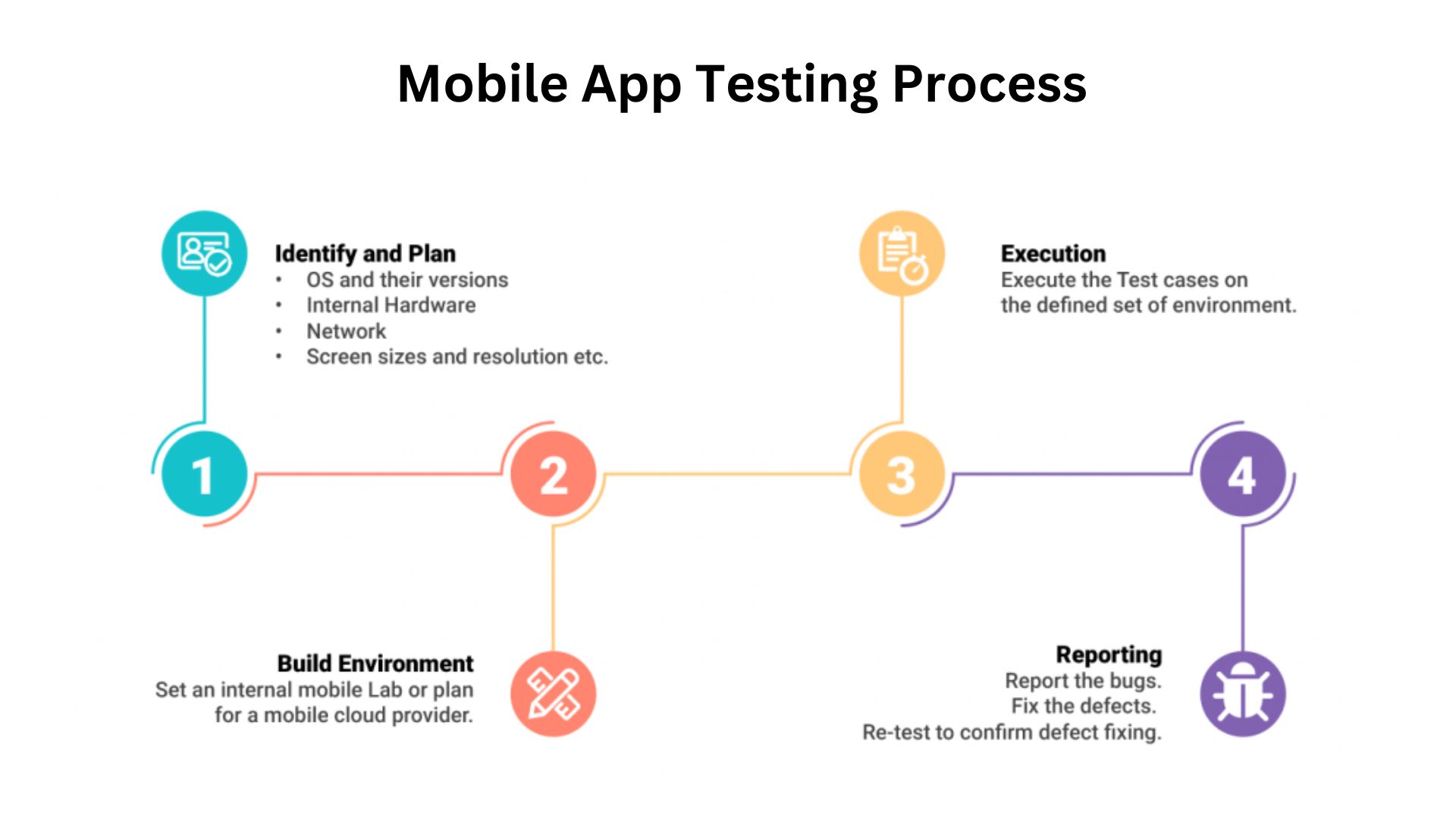
During the testing phase, any issues or errors in the application are identified and reported back to the development team for resolution. This process typically takes about 3 to 4 weeks. Initially, developers perform alpha testing on their own applications. This is followed by beta testing, where a group of test users is invited to use and evaluate the application.
These tests determine if the application is stable enough to handle multiple users simultaneously, assess its smoothness, and check its ability to handle exceptions without critical errors. They also test the application’s smoothness, ability to handle exception situations, and ensure there are no fatal errors.
Once beta testing is completed, user feedback is collected and analyzed. Based on this feedback, necessary improvements are made to enhance the application’s quality. In addition, many other types of testing are also conducted such as integration testing (ensuring different parts of the application work together), functional testing (verifying features work as designed), and usability testing (evaluating user experience).
An essential part of testing is verifying the application’s performance on various mobile devices to ensure it runs well in all environments. All detected errors must be resolved before the application is released to end users. Although thorough testing is labor-intensive, it is crucial for ensuring the app functions optimally and delivers an excellent user experience.
Phase 5: Release the Application
After successfully completing all previous stages, the final step in the mobile app development lifecycle is releasing the product to popular app stores such as the App Store and Google Play Store. Before the official release, it is crucial to prepare key elements to ensure the application is easily accessible to users.
This includes search engine optimization (SEO) and creating attractive promotional content to capture user interest. Once these preparations are complete, the application will be published and officially available for users to download and use.
To ensure long-term success, it is essential to continue marketing and promoting the app, as well as gathering and responding to user feedback to improve and upgrade the app over time.
Develop Mobile Applications with Evotek
At Evotek, we understand that mobile application development is a complex process that requires professionalism and strict adherence to the stages of the development lifecycle. Our team of experienced and specialized programmers follows a comprehensive five-stage mobile application development process to ensure high quality and maximum customer satisfaction.
With our professional and thorough development approach, Evotek is committed to delivering high-quality products that meet customer needs and help businesses gain a competitive edge in the highly competitive mobile technology field.
